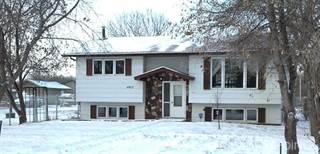Throughout 2016, there has been a nagging question mark at the back of my mind about the state of Alberta’s residential real estate market. Why has this market held up so well when the economy has suffered two years of recession? After 18 months of economic contraction, residential real estate has not cratered and housing starts, though at reduced levels, are still fairly strong at about 2,000 units per month. This series investigates firstly whether there is a “crisis” in the residential market, secondly what are the drivers of residential prices; thirdly the financial sources of supply for the housing market, and finally the prospects for 2017.
Part 1
Real estate markets, generally speaking, meet the test of “perfectly competitive markets.” Perfect competition means 1) a large number of buyers and sellers; 2) all buyers and sellers know all prices and attributes of the products being sold; 3) products are homogeneous- that is they can be substituted for one another; 4) no barriers to entry or exit; 5) well-defined property rights -in other words no ambiguity in the contracting process; 6) each participant is a price taker; 7) buyers are rational (utility maximizers); 8) sellers seek to maximize their profits; and 9) no transaction costs.
 One can see from the list above that the conditions of a perfectly competitive market need to be relaxed. For example, buying or selling a house involves paying significant commissions to transact a sale (real estate agents and lawyers). Certainly other conditions are not satisfied such as full information and the presence of dominant players (both agents and development companies and builders).
One can see from the list above that the conditions of a perfectly competitive market need to be relaxed. For example, buying or selling a house involves paying significant commissions to transact a sale (real estate agents and lawyers). Certainly other conditions are not satisfied such as full information and the presence of dominant players (both agents and development companies and builders).compared to 91 per cent during the same period in 2015. This will create stress in the construction, development, and finance sectors. Forecasts in the Calgary report are all premised on the hope that “oil prices will improve.”

A crucial difference between then and now is that interest rates are significantly lower today (Over 10 per cent versus under 5 per cent).
 In Edmonton prices peaked in May 2015 at 184.24 and have remained remarkably stable declining to 180.34 in November 2016. In a similar vein, the Calgary index was 180.99 in November 2016. Indeed the Index for both centres is eerily flat over the past year. It is as if the market has been frozen for a year with sellers and buyers remaining on the sidelines. But this is not the case since the number of observations in the data series has not fallen dramatically in either city.
In Edmonton prices peaked in May 2015 at 184.24 and have remained remarkably stable declining to 180.34 in November 2016. In a similar vein, the Calgary index was 180.99 in November 2016. Indeed the Index for both centres is eerily flat over the past year. It is as if the market has been frozen for a year with sellers and buyers remaining on the sidelines. But this is not the case since the number of observations in the data series has not fallen dramatically in either city.As the next chart shows the number of observations have increased. This may be due to the nature of the index that requires at least two sales of the same property to be included in the Index’s calculation. Naturally over time, more properties will be included in the index.

Another source of relevant information is the monthly information published by the Calgary and Edmonton Real Estate Boards. Year to date listings (to November) in Edmonton have fallen somewhat from the previous year and sales and the dollar value are down from the peak in 2014. The month-end inventory for November 2016 is the highest in the past five years signaling that sellers are not prepared to sell significantly below their offer price. The value of year-to-date sales in 2016 was $6.4 billion compared with $6.9 billion in 2015 and $7.6 billion in 2014 ($ 6.5 billion- 2013; $5.8 billion- 2012). Thus, the market is experiencing a downturn but this is yet to be reflected in a material decline in selling price.[2]
The next chart illustra
vacancy rate in 2016 was eight per cent, (the highest level in 25 years) and would fall to 7.5 per cent in 2017 and to average 6.5 per cent in 2018.[4] Rental rates are forecast to fall from about $1300 per month for a two bedroom apartment to $1260 in 2017.
 Edmonton CMA’s vacancy rate was estimated at 7.1 per cent in October 2016.[5] The rise in vacancy has been driven by “elevated construction of rental units over the past three years.” The growth of construction was particularly pronounced outside the City of Edmonton.
Edmonton CMA’s vacancy rate was estimated at 7.1 per cent in October 2016.[5] The rise in vacancy has been driven by “elevated construction of rental units over the past three years.” The growth of construction was particularly pronounced outside the City of Edmonton.So is there a housing crisis? The short answer is no. Prices have held up surprisingly well and there has not been a collapse in the new supply of housing. However we should not be complacent for three main reasons: 1) interest rates are rising and even increases of one per cent means mortgage payment increases of 15 to 40 per cent; 2) aggregate incomes to incur more debt and to service debt will continue to fall as income support programs and severance payments run out and as more full-time jobs are replaced by part-time employment or “contract” work; and 3) rental rates are falling suggesting a balance in favour of renters as more supply becomes available and as disposable incomes fall.
Footnotes